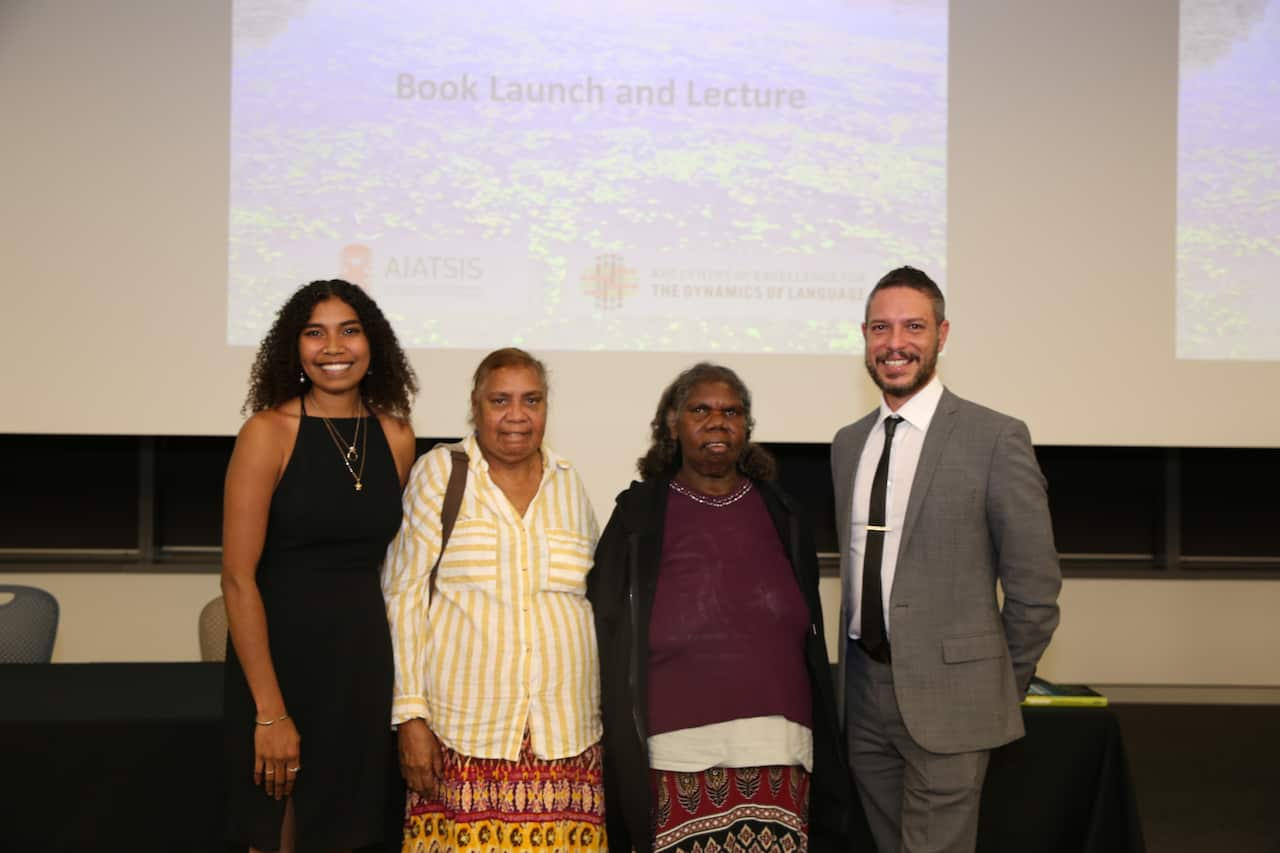A new dictionary offers fresh hope to save an Indigenous language once dominant in parts of the Northern Territory then threatened with extinction.
The Ngarinyman language has its origins in the Victoria River district but, like many of estimated 250 Aboriginal and Torres Strait Islander languages, it faced being permanently silenced.
For 25 years dozens of people - including linguists, anthropologists and community members - have been working on a Ngarinyman-to-English dictionary in a salvation effort.
The published result, unveiled this week, contains translations as well as illustrations and encyclopaedic information about plants, animals and cultural practices in the region.
Three Ngarinyman women travelled more than 3500km from the remote NT community of Yarralin for the book launch in Brisbane.
It is the first in a series of around 20 dictionaries to be published through a language preservation project run by the Australian Institute of Aboriginal and Torres Strait Islander Studies (AIATSIS) Foundation. “These books allow us to share our stories and have our voices heard on a much wider platform," said community leader Lucy Pedwell.
“These books allow us to share our stories and have our voices heard on a much wider platform," said community leader Lucy Pedwell.

Mikalya Friday-Shaw, Joy Campbell and Christine Daly with Daniel Browning at the Ngarinyman to English dictionary launch in Brisbane. Source: Supplied
"They are a symbol of the strength of our culture and languages.”
Ngarinyman woman Mikayla Friday-Shaw said many Elders did not live to see the project come to fruition.
“I am thrilled that the dictionary is finally finished but my heart aches for my Elders who were a part of the collaboration and passed away before it was published," she said.
"We honour their memories in this book.”
AIATSIS Foundation president Rachel Perkins said time was running out to capture Indigenous languages before they die out.
"Of the 250 languages that were here in 1788, only 10 per cent of those 250 languages have been anywhere near documented properly, so we thought we really need to do something about that," Ms Perkins told the ABC.
"Most of Australian languages – that is, Indigenous languages – are endangered. We lose one to two every year, as old people pass away.
"Of those 250 languages that were there in 1788, there’s only 100 left and we think only 50 will survive by the year 2050."
The United Nations General Assembly has declared 2019 as the International Year of Indigenous Languages.
Share

